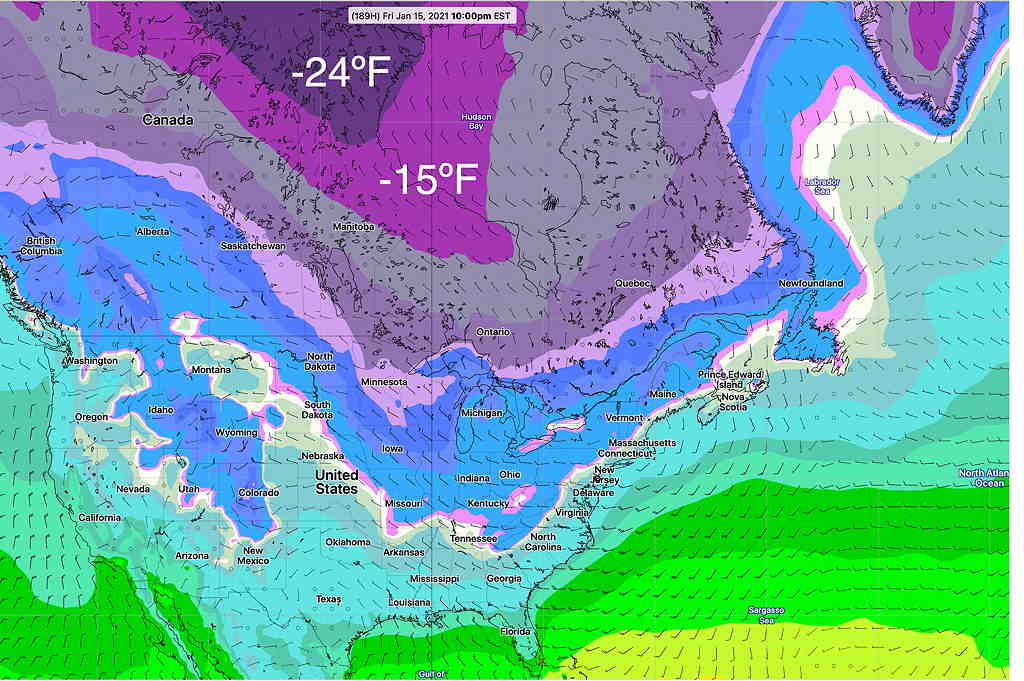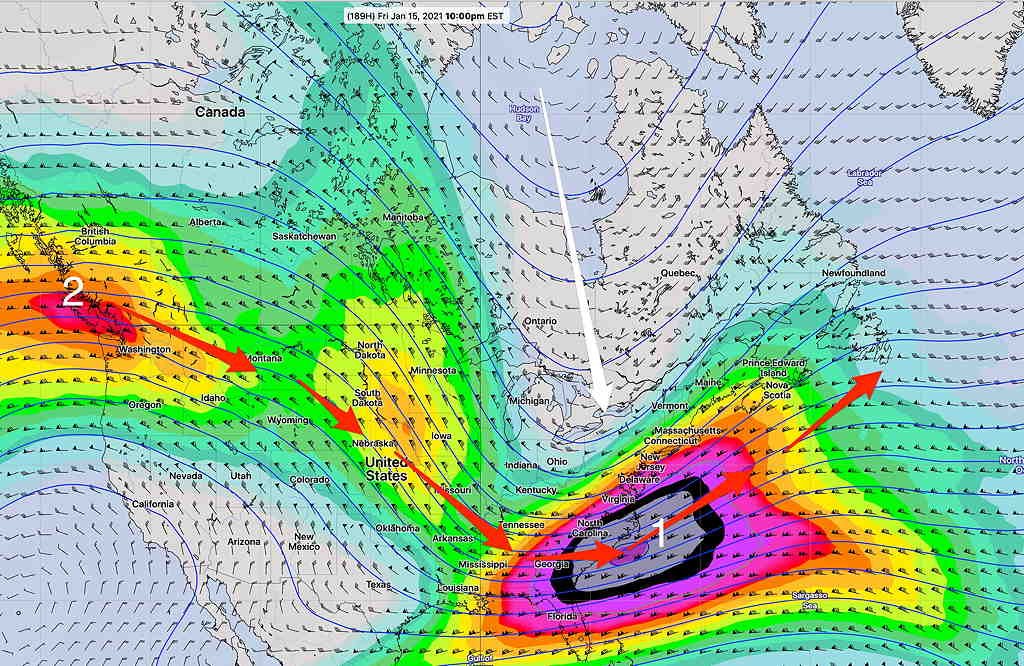I should preface this post by saying that I enjoy trying to predict snow rather than dealing with it after it has fallen. Pretty when it falls, a pain afterwards.
That said, I’m being asked, ‘ so where’s the snow?’
I’ve mentioned since the end of November that my sense of the weather pattern so far this winter is what I like to call “a lack of very cold air” to our north.
Here’s the current GFS statistical ensemble forecast (GEFS average) expected minimum temperatures for next week—

Well, maybe you’re thinking, -24ºF seems awfully cold to me? The truth is, when things get going, temperatures are as low as -40º to -50º in the same areas above, especially in Greenland. (Greenland is looking awfully warm this year.)
Contrary to what many weather entertainers on TV seem to suggest, the jet stream doesn’t just do it’s own, arbitrary thing. The jet stream, a fast flow of winds at about 35,000 to 40,000 feet in winter, is a river of air actually flowing in the three dimensional “valley” between air masses.
It is the density and shape of the cold air mass that determines the shape of the valley and of the jet, not the other way around. In essence, the jet flow shape in winter depends on the “sag” of very cold moving southward, as depicted below with the white line—

Notice that the white line is tilted slightly eastward instead of straight southward. The relatively “not so cold air” up north doesn’t have the mass density to dive straight south. The jet stream flow (red arrows) isn’t suppressed directly southward, but rather southeastward.
There also hasn’t been much of a blocking effect of a large cold air mass over Greenland and the Northern Atlantic to cause the same jet flow to bend back north up the coastline.
As a result the two “jet streak” impulses (numbers 1 and 2 above) develop low pressure systems, but these move out to sea.
So we need colder air in Canada, and colder air in Greenland and the North Atlantic.
The time period depicted above (January 15th-20th) does show some positive trends towards snow here:
- Temperatures are colder in Canada than they’ve been.
- The jet flow next week will be “less split” than it’s been. It does appear that some phasing may occur between the northern jet flow shown (disturbance #1 above) and the southern jet flow (just visible on the map from Mexico and near #1)
So, some colder temperatures and some action is possible January 15th – January 20th, although not currently captured on the models. Stay tuned
